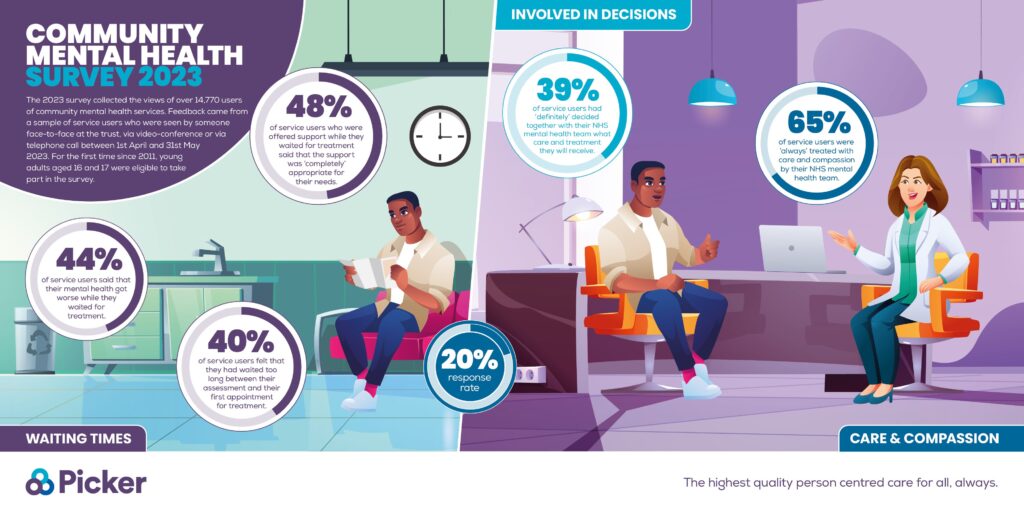Despite the impact of Covid-19, urgent and emergency care services have seen positive improvements in person centred care
The Covid-19 pandemic continues to place huge challenges on the health service. Like all areas of the NHS, urgent and emergency care services had to adapt quickly to stem transmission and infection rates. New measures were implemented to meet demands, ensuring all departments were a safe environment for both patients and staff.
Results from the 2020 Urgent and Emergency Care survey show that even with the added pressures, person centred care has remained an area of focus, with clear improvements made across continuity of care, trust in professionals, and overall experience.
Infection control measures
Several new questions were introduced into the 2020 survey to measure patient experience of infection control measures. For the Type 1 (accident and emergency department) survey, respondents were asked if they were treated in a separate area of A&E because they had coronavirus, or symptoms of coronavirus, almost one in ten (9%) said they were. Across both Type 1 and Type 3 (urgent treatment centres) surveys, respondents reported high visibility of infection control measures; 96% (Type 1) and 98% (Type 3) said they saw social distancing measures; 95% (Type 1) and 97% (Type 3) said they saw handwashing with hand sanitiser and soap, and 96% (Type 1) and 97% (Type 3) said they saw staff wearing PPE.
One of the most positive results in the 2020 survey is in the proportion of respondents stating that the A&E department or urgent treatment centre they visited was ‘very clean’, with an eleven-percentage point increase on 2018 results. These findings likely reflect heightened patient awareness and the increased prevalence of cleanliness and hygiene measures in hospitals during the pandemic.
Person centred care
One of the Picker Principles of Person Centred Care is the continuity of care and smooth transitions, this is an aspect where positive progress has been seen in the 2020 Urgent and emergency care survey. This topic is of particular importance as the NHS moves towards an integrated care system, aligning care between primary, community care, and hospitals to improve patient experience. Statistically significant increases have been seen across Type 1 and Type 3 (1 percentage point and 4 percentage points respectively) in the proportion of patients told by staff whom to contact if they were worried about their condition or treatment after they left the department. A statistically significant increase was also seen in the proportion of those who answered ‘Yes, completely’ when asked if a member of staff told them about what symptoms to watch for regarding their illness or treatment after they went home (2 percentage points, Type 1 and 8 percentage points, Type 3 ).
Other principles of person centred care, effective treatment delivered by trusted professionals, and clear information, communication, and support for self-care, also saw improvements from 2018. With Type 1 patients stating they ‘definitely’ had confidence and trust in the doctors and nurses treating them (a significant increase of 2 percentage points) and Type 3 patients stating they ‘definitely’ had enough time to discuss their condition with health professionals (significant increase of 2 percentage points).
On a final positive note, there were increases in the number of patients feeling they had been treated with respect and dignity and statistically significant increases in the proportion of respondents who gave their overall experience a score of 10, (meaning that they had a very good experience) across both survey types. Indeed, the majority of respondents either gave their overall experience rating as a 9 or a 10 (53% for Type 1, 63% for Type 3). While perhaps some of this increase could be explained by the reduced attendances and shorter waiting times at urgent and emergency care departments during stages of the pandemic in 2020, we feel that improvements in person centred care may well have played their part.
The challenges and changes that the Covid-19 pandemic have brought upon urgent and emergency care departments are vast, but there are early signs that some of the changes have led to an improved patient experience across certain factors. We would hope to see these improvements maintained in the upcoming waves of the Urgent and Emergency Care Survey.
The results of the latest Urgent and Emergency care survey were released on 15th September 2021. The full results can be seen here, the press release here, and the infographics showing the results for Type 1 departments here and Type 3 departments here.

